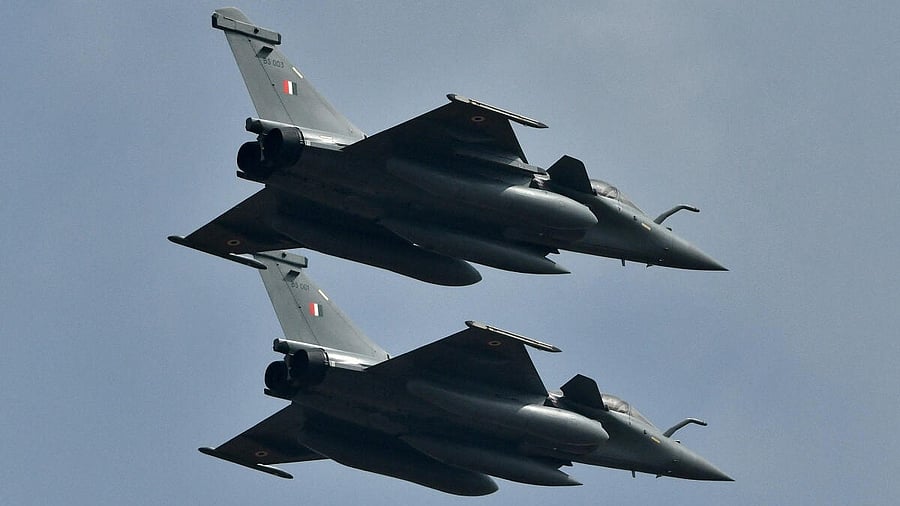
India's Rafale fighter jets at an air show
Credit: Reuters Photo
New Delhi: India shot down five Pakistan Air Force fighter jets and one large intelligence gathering aircraft during Operation Sindoor, Chief of the Air Staff Air Chief Marshal A P Singh said on Saturday, marking the first official disclosure of the “kills” that the armed forces had made during the four-day conflict with Pakistan in May.
“We have confirmed kills of at least five fighters and one large aircraft, which could be either an ELINT (electronic intelligence) or an AEW&C (airborne early warning and control) aircraft, which was taken on at a distance of about 300 kilometres. This is actually the largest ever recorded surface-to-air kill that we can talk about,” Air Chief Marshal Singh said, delivering the Air Chief Marshal LM Katre memorial lecture at Bengaluru.
He said the kills were made by the S-400 air defence system and fighter aircraft. Also some of the F-16 and AEW&C aircraft inside Pakistani hangars were damaged by the Indian hit.
This is the first official account of the “kills” from the Indian side and has been made nearly three months after the 88 hours of conflict on the western front.
"Jacobabad airfield was one of the major airfields that was attacked. There's an F-16 hangar. One half of the hangar is gone. And I'm sure there were some aircraft inside which got damaged. We were able to get at least two command and control centres at Murid and Chaklala,” he said.
"At least six radars, some of them big, some of them small, were hit. Two SAGW (surface to air guided weapons) systems and runways at Sargodha and Rahimyar Khan were hit. Three hangars that we attacked were the UAV one at Sukoor, the AEW&C hangar at Bholari and F-16 hangar at Jacocabad. We have an indication of at least one AEW&C in that AEW&C hangar and a few F-16s, which were under maintenance, were damaged,” he said.
The Indian Air Force chief said there were no restrictions imposed on the forces and a clear direction was given. “A key reason for success was the presence of political will. There were very clear directions given to us. No restrictions were put on us. If there were any constraints, they were self-made,” he said, noting that it was decided not to target certain installations to prevent escalation of the conflict.
“The forces decided what will be our rules of engagement, what will be the escalation ladder that we will ride on and we decided how to control the escalation ladder,” he added.
Air Chief Marshal Singh described the S-400 system as the game changer that blocked Pakistan’s attempts to penetrate the Indian air defence and attack the military bases.
"The S-400 system, which we had recently bought, has been a game-changer. The range of that system has really kept their aircraft away and from their weapons like, those long-range glide bombs. They have not been able to use any one of those because they have not been able to penetrate the system,” he said.
On the strike at Sargodha air base, he said, “We have grown up in the IAF dreaming about days like this. Someday we will get a chance. Just so happens that I got a chance before my retirement. We attacked the airfield that had the F-16s," he added.
The IAF chief said Srinagar, Awantipur and Adampur air force stations took the brunt of Pakistani attacks even though the neighbours targeted several other airfields. A lot of wreckage has been recovered and is being analysed with support from Defence Research and Development Organisation, he added.
